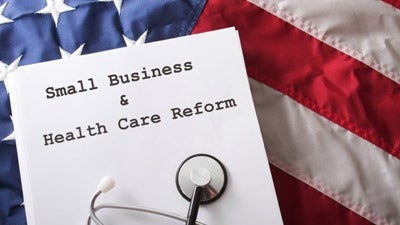
Perhaps the biggest obstacle, Ted and Kile suggested, is that not many small business owners know very much about their health insurance plan. They don’t really know how it works until they have to use it, so the mix of deductibles, premiums, coverages, and co-pays are not fully understood. Health care is a confusing topic, and it can seem especially difficult because things are changing so quickly right now. For example, many businesses have been preparing to make decisions about Employer Mandate, part of the Affordable Care Act—until it was delayed an extra year earlier this month. But it is critical to understand what you’re looking at, what your needs are, and what plan works best for you.Think about health care in the context of your family. You might not have any employees, so your health care plan really is just for your family. Or you might have a plan for your employees, who in that case are like your family. You know that one way or another there is a certain amount of money you are going to have to spend on health care. You need to approach it analytically: what is your medical history, and the medical history of your family members and employees? What expenses do you anticipate? You’ll have choices then, for your deductibles and co-pays, once you are looking at health care costs as a single line-item.
Check out the bonus feature from this event –
“A Small Business’s Approach to Health Care Reform”
The Patient Protection and Affordable Care Act is changing many things about health care for small businesses. You can learn more from the SmallBizClub.com white paper on health care reform, available here. Ted and Kile also shared a few of the items they are focusing on.Insurance costs will increase for younger people, because the law limits the permissible cost differential between younger and older employees. Before reform takes effect, the cost can differ by 700%; after reform, the maximum differential is 300%. If the total cost to deliver health care is unchanged, that means costs for younger workers must go up to reduce the difference.
Reform will create a new environment for buying health insurance. With the exchanges run by the federal and state governments, and the Small Business Health Options Plan (SHOP), it will be like an Orbitz or Expedia for health care. You can certainly stay on with your current broker, although the insurance company may change the details of your plan, but you’ll also have additional options from both the government as well as plans from private carriers offered on the exchanges.
Pay close attention to finding out whether your small business qualifies for health care tax credits. If you have fewer than 10 employees, and the average salary is under $25,000, there are tax credits for potentially as much as 50 percent of health care costs. There are also credits for businesses with fewer than 25 employees, and average salaries of under $50,000. But it’s up to you to raise that issue with your accountant—if you never ask, you might very easily miss out on something you’re eligible for.
Rules are also changing for Flexible Spending Accounts. The limit on those accounts already went down to $2,500 this year, and it seems likely that there will be further restrictions on those plans. Right now, 24 percent of all small businesses have FSAs, and more than 22 million people use them. It seems likely that number will decrease.
If you’re looking to avoid the employer mandate when it goes into effect in 2015 by hiring armies of part-time employees to avoid crossing the 50 full-time employee line, watch out. That will not protect you from the limit. Part of the reform will be counting the total hours of your workers and calculating that into an estimated number of full-time workers for whom you would have to be paying for care.
Your Approach
Taking the right approach to reform will make the transition go much better for your small business. Don’t feel like you have to make the decision today; things are still changing, and many people making major decisions based on what they think will happen are likely to be premature. You might consider renewing your current coverage in December, giving you another year to evaluate the exchanges and other options. Don’t make a short term decision with a long-term bad impact.
Here is a five-step process to approaching health care reform most effectively:
1. Have a Goal. Do you want to provide health insurance? Can you afford it on your bottom line?
2. Have a Plan. There’s a lot of information out there, but it’s not always relevant or from knowledgeable sources. Find credible information to guide your decisions.
3. Execute Your Plan. Take a look at all your options—health insurance brokers, the SHOP Exchange, federal exchanges, etc. Size up the costs, and work the plan.
4. Remain Flexible. Things are changing all the time. Whatever you do put in place, understand it needs to be fluid.
5. Don’t Get Discouraged. Many small businesses owners are worried about rising costs, about their employees complaining, or other issues. Make sure you get accurate facts to your peole, because discouragement affects your bottom line.
3058 Views







